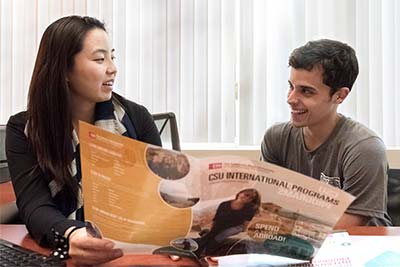Invasive Plants at Fullerton Arboretum
Invasive plants, often called weeds, are a common and recurring problem for many botanical gardens. Arboretum and Botanic Garden at Cal State Fullerton was formerly a citrus orchard that, when abandoned in the early 1970s, became a reservoir for many local weeds. It’s taken decades of development to control these plants, most of which we can never completely eradicate.
When the Arboretum closed in March 2020 due to the COVID-19 pandemic, our field staff were furloughed, and volunteers were excluded. In their absence, invasive plants that were present in manageable numbers quickly re-established themselves. They vigorously grew to maturity, flowered, and distributed their seed or sent root systems throughout garden areas that had been well-managed up to that point.
Invasive plant seeds are now present in large numbers in Arboretum soil seed banks. It will take time and effort for staff and volunteers to root out these weeds and re-establish control.
What is a Weed?
A weed is commonly called a plant that is “out of place” in its environment. Ralph Waldo Emerson said that it is “A plant whose virtue has not yet been discovered.”
Weeds in southern California generally have the following characteristics:
- Competitive, persistent and noxious.
- Quickly established, adaptable and fast-growing.
- Often find favorable habitat in areas with disturbed soil.
- Many are annuals that complete their life cycle in one season. Others are perennial, longer-lived with woody stems and underground structures.
- Some weeds are indigenous. Others have been introduced here whether on purpose or
by accident. An example of that would be black mustard - Brassica nigra. Helen Hunt
Jackson had mixed feelings in her 1884 novel "Ramona":
“The plant is a tyrant and a nuisance, – the terror of the farmer;
it takes riotous possession of a whole field in a season;
once in, never out;
for one plant this year, a million next;
but it is impossible to wish that the land were freed of it.
Its gold is as distinct a value to the eye as the nugget gold is in the pocket.” - Black mustard is also flammable, a real danger in southern California for those living in wildland urban interface areas.
- Produce lots of long-lasting seeds that are easily dispersed by wind, touch or through insects/animals. Long-term seed dormancy, often for years, occurs in the soil seed bank with germination usually requiring exposure to sunlight and moisture.
- Certain weeds reproduce by vegetative reproductive structures (roots or rhizomes) instead of or in addition to seeds.
- Interestingly, weeds have some of the highest positive growth responses to the increased CO2 in the atmosphere due to global climate disruption.
How Does Arboretum and Botanic Garden at Cal State Fullerton Manage Weeds?
Some common, recurring weeds at the Arboretum include short-pod mustard, white horehound, stinging nettle, sow thistle, nutsedge, cheese weed, prickly lettuce, moth vine, veldt grass and catchweed bedstraw.
Arboretum staff have created a Landscape Management Plan and through it implement Integrated Pest Management (IPM), setting four-season thresholds for control (not eradication). Some key management practices that we use to “set the stage” include:
- Creation of a thriving natural biodiversity in all of our collections that promotes good plant health, allowing them to outcompete weeds.
- Excellent soil and bed preparation to encourage strong root growth.
- Putting the right plant in the right place.
Control methods include:
- Mechanical (cutting, mowing, pulling out by hand). Often needs to be repeated.
- Organic mulching and composting to reduce germination of weed seeds and to reduce soil moisture loss. This method also helps build new soil. Our mulch and compost is produced on-site from plant cuttings harvested at the Arboretum.
- Inorganic soil coverings, such as plastic, paper and weed cloth, are not used as often at the Arboretum.
- Biological methods use other plants to control weeds. For example, cultivation of sweet potato at the U-ACRE garden inhibits the growth of nutsedge. Also, “packing in” plants to a higher density helps to suppress the ability of weeds to infiltrate the collection.
- Herbicides are organic or synthetic chemicals, either pre-emergent or post-emergent. This is a limited, careful and very targeted practice used when other methods are not effective.
- Arboretum's detailed Integrated Pest Management Plan.
Information about invasive plants may be found on the University of California Integrated Pest Management website: http://ipm.ucanr.edu/index.html.








